A portion of plastic bottle found on
Mothecombe Beach at the mouth of the Erme Estuary in South Devon, England, on
May 30, 2019. Photo: Dan Kitwood/Getty Images
July 20 2019, 12:30 p.m.
THE STUDENTS AT Westmeade Elementary School worked hard on their
dragon. And it paid off. The plastic bag receptacle that the kids painted green
and outfitted with triangular white teeth and a “feed me” sign won the students
from the Nashville suburb first place in a recycling box decorating contest.
The idea, as Westmeade’s proud principal told a local TV news show, was to help the environment. But the real
story behind the dragon — as with much of the escalating war over plastic
waste — is more complicated.
The contest was sponsored by A Bag’s Life, a recycling promotion and education effort of the
American Progressive Bag Alliance, a lobbying group that fights restrictions on
plastic. That organization is part of the Plastics Industry Association, a trade
group that includes Shell Polymers, LyondellBasell, Exxon Mobil, Chevron
Phillips, DowDuPont, and Novolex — all of which profit hugely from the
continued production of plastics. And even as A Bag’s Life was
encouraging kids to spread the uplifting message of cleaning up plastic waste,
its parent organization, the American Progressive Bag Alliance, was backing a
state bill that would strip Tennesseans of their ability to
address the plastics crisis. The legislation would make it illegal for local
governments to ban or restrict bags and other single-use plastic products — one
of the few things shownto actually reduce plastic waste.
A week after Westmeade’s dragon won
the contest, the APBA got its own reward: The plastic preemption bill passed
the Tennessee state legislature. Weeks later, the governor signed it into
law, throwing a wrench into an effort underway in Memphis to charge a
fee for plastic bags. Meanwhile, A Bag’s Life gave the Westmeade kids who
worked on the bag monster a $100 gift card to use “as they please.” And
with that, a minuscule fraction of its vast wealth, the plastics industry
applied a green veneer to its increasingly bitter and desperate fight to keep
profiting from a product that is polluting the world.
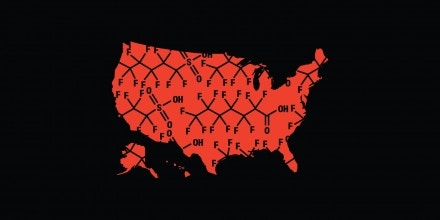
A Bag’s Life is just one small part
of a massive, industry-led effort now underway to suppress meaningful efforts
to reduce plastic waste while keeping the idea of recycling alive. The reality
of plastics recycling? It’s pretty much already dead. In 2015, the U.S.
recycled about 9 percent of its plastic waste, and since then the number has
dropped even lower. The vast majority of the 8.3 billion metric tons of plastic
ever produced — 79 percent — has ended up in landfills or scattered all
around the world. And as for those plastic shopping bags the kids were hoping
to contain: Less than 1 percent of the tens of billions of plastic bags used in the U.S. each year are
recycled.
This is not to say that we shouldn’t
try to properly dispose of the array of toys, single-use clamshells, bottles,
bags, takeout containers, iced coffee cups, straws, sachets, yogurt tubs, pouches,
candy bar wrappers, utensils, chip bags, toiletry tubes, electronics, and lids
for everything that passes through our lives daily. We have to. But we are well
past the point where the heartfelt efforts of schoolchildren or anyone else on
the consumer end can solve the plastics problem. It no longer matters how many
hoots we give. There is already way too much plastic that won’t decompose and
ultimately has nowhere to go, whether it’s mashed into a dragon container or
not.
A Chinese worker walks past piles of
plastic bottles at a plastic bottle recycling station in Ji’nan city, in east
China’s Shandong province, on May 4, 2017.
Photo: Imaginechina via AP Images
China’s National Sword
China’s decision in 2017 to stop
receiving the vast majority of plastic waste from other countries blew the
flimsy lid off our dysfunctional recycling system. That year, when the Chinese
government announced the National Sword policy, as it’s called, the U.S. sent
931 million kilograms of plastic waste to China and Hong Kong. The U.S. has
been offloading vast bundles of scrap this way since at least 1994, when the
Environmental Protection Agency began tracking plastics exports. The practice
has served to both mask the mounting crisis and absolve U.S. consumers of
guilt. But in fact, much of the “recycled” plastic scrap that the U.S. sent to
China appears to have been burned or buried instead of being
refashioned into new products.
Although China’s turnabout made the
failure of the plastics recycling system suddenly and undeniably obvious, in
truth the plastics problem has been with us as long as plastic has. Over the
decades, as production has grown exponentially, we’ve never managed
to repurpose even one-tenth of our plastic waste. Since the EPA began tracking
plastics recycling in 1994, when the U.S. recycled less than 5 percent, the
rate went up only about 5 percent, peaking at 9.5 percent in 2014. Although
there is no data before 1994, the rate was almost certainly even lower then.
Some of that failure can be blamed on careless consumers, but much of the waste
that is dutifully put into recycling bins and bags also gets landfilled and
burned because there’s no market for it.
Much of the “recycled” plastic scrap
that the U.S. sent to China appears to have been burned or buried
instead of being refashioned into new products.
The plastics problem has been growing
exponentially for decades. In 1967, when Dustin Hoffman’s character in “The
Graduate” was being advised to go into plastics, less than 25 million tons were
produced each year. Even back then, the companies that made the plastic were already aware of the growing waste problem. Yet by 1980,
production had doubled. Ten years later, it doubled again to 100 million tons,
surpassing the amount of steel produced globally. Today, the plastics industry,
estimated to be worth more than $4 trillion, generates more than 300 million
tons of plastic a year according to the most recent records — nearly half
of which is for single-use items, meaning that it will almost instantly become
trash.
With the institution of China’s new
policy in January 2018, the extent of the plastic waste crisis became
dramatically more visible. Around the world, bales of used plastic that just a
year earlier would have been destined for China began piling up. In the U.S., some cities have stopped their plastics recycling programs altogether.
Without good alternatives, the U.S.
is now burning six times the amount of plastic it’s recycling —
even though the incineration process releases cancer-causing pollutants into
the air and creates toxic ash, which also needs to be disposed of somewhere.
And poor people are stuck with the worst consequences of the plastics
crisis. Eight out of 10 incinerators in the U.S. are in communities that
are either poorer or have fewer white people than the rest of the country,
and residents living near them are exposed to the toxic air
pollution their combustion produces.
Globally, too, the problem is being
dumped on the less fortunate and less powerful. Because the U.S. can no longer
ship its plastic waste to China, much of that waste is going to Turkey,
Senegal, and other countries that are ill-equipped to deal with it. In May, the
most recent month for which data is available, the U.S. sent 64.9 million
kilograms of plastic scrap to 58 countries. Thailand, India, and Indonesia —
where more than 80 percent of waste is mismanaged, according to data published in Science — are among the countries that now find themselves besieged with U.S. plastic that’s being illegally dumped and burned.
A reservoir contaminated with plastic
waste in Lhokseumawe, Indonesia, on March 22, 2019.
Photo: Zikri Maulana/SOPA
Images/LightRocket via Getty Images
All the Plastics in the Seas
The terrifying news about plastic
seems to be as inescapable as the plastic itself, tiny bits of which are now
almost everywhere. One study found these “microplastics” in
the Pyrenees mountain air 100 miles from the nearest city. Another found that microplastics are being turned into
sewage sludge and spread on fields that grow food. And, as we know from the
plastic-filled whales that regularly wash up dead, the oceans are awash in plastic waste and now
contain some 150 million tons of the stuff — a mass expected soon to surpass
the weight of all the fish in the seas.
We humans also have plastic lodged in
our bodies. The substance often sold to us as protection from
contamination is in both food and water. Bottled water, sales of which
are increasing in part because people are seeking alternatives
to contaminated local water supplies, now containsplastic as well. A 2018 study found that 93 percent of bottled water samples
contained microplastics. While all the big brands tested positive for
microplastics, the worst was Nestlé Pure Life, which claims that its water “goes through a 12-step
quality process, so you can trust every drop.”
It’s worth noting that in both 2017 and 2018, Nestlé ranked in the top three among brands whose
plastic trash was most often collected in global cleanup efforts conducted by
the environmental group Break Free From Plastic.
The confluence of terrible news has
taken public outrage over plastic to a new level. Once regarded mostly as an
eyesore or a nuisance, plastic waste is now widely understood to be a cause
of species extinction, ecological devastation, and human health problems. And because more than 99 percent of plastic is
derived from oil, natural gas, and coal — and because its destruction also uses
fossil fuels — environmental groups now recognize plastic as a major
contributor to climate change. Naturalist David Attenborough has likened the shift in public opinion over
plastics to the process through which the public reached a consensus on the
harms of slavery.
Once regarded mostly as an eyesore or
a nuisance, plastic waste is now widely understood to be a cause
of species extinction, ecological devastation, and human
health problems.
Between extraction, refining, and
waste management, the production and incineration of plastics will add more
than 850 million metric tons of greenhouse gases to the atmosphere this year
alone — an amount equal to the emissions from 189 500-megawatt coal power
plants, according to a report from the Center for International Environmental
Law.
Recycled plastics — once seen as a
sign of environmental virtue — is increasingly recognized as posing threats to
our health. Plastics contain additives that determine its properties, including
stability, color, and flexibility. Most of the thousands of these
chemicals aren’t regulated, but it’s clear that some of those additives, which
end up in recycled plastics, are dangerous. One study found that half of recycled plastics in India
contained a flame retardant associated with neurological, reproductive, and
developmental harms.
Black plastic, used in everything
from children’s toys to kitchen utensils, food packaging, cellphone cases, and thermoses,
appears to be particularly dangerous. The plastic is often sourced from
recycled electronics that contain phthalates, flame retardants, and heavy metals, such as cadmium, lead, and
mercury. Even at very low levels, these chemicals can cause serious reproductive and developmental problems.
But most of the additives aren’t
tracked or well studied. “The industry has no idea what they’re putting in the
plastic and who’s putting it in,” said Andrew Turner, a British chemist who
recently found toxic chemicals in 40 percent of the black plastic toys,
thermoses, cocktail stirrers, and utensils he tested. In some plastic, he found the chemicals present at
30 times safety standards set by governments.
Even chemicals that are regulated
often have limits set for electronics but not for recycled products. “You’ve
got something that wouldn’t be compliant with the regulations as an electric
item because its levels are too high, but because it’s turned into a fork,
there’s nothing to stop it from being used,” Turner said. Antimony, which
Turner found in food containers, toys, and office supplies, “is restricted in
drinking water, but not in electrical waste.” Turner and Zhanyun Wang, another
scientist I spoke with who studies chemical additives to plastics, told me that
they no longer use black plastic utensils. “Given the option, I’d prefer
something white or clear,” said Turner, adding that he tries to avoid utensils
made of any kind of plastic.
The solution to this global mess
clearly has to be much bigger than personal cutlery choices. Among the
organizations demanding that we push past the idea of recycling and require
corporations to limit plastics production are Greenpeace, the Surfrider Foundation, As You Sow, the Rainforest Alliance and 5Gyres, an organization started by a couple who sailed
across the Pacific Ocean on a raft made out of discarded bottles. Fueled by a
spike in consumer frustration with products that make them complicit in the
problem, plastic-free restaurants and grocery stores are now emerging.
Taxes, bans, and fees on plastic
products have been catching on around the world. In March, the European Union
voted to ban single-use plastics by 2021. In June, Canada
followed suit, with Prime Minister Justin Trudeau vowing to not just ban single-use plastics such as
bags, straws, and cutlery, but also to hold plastics manufacturers responsible
for their waste. One hundred and forty-one countries, including China,
Bangladesh, India, and 34 African countries, have implemented taxes or partial bans on plastics.
In the U.S., the Trump
administration has worked against international
efforts to crack down
on plastic waste, so cities and towns are leading the way. While only eight
states have enacted plastic restrictions, more than 330 local plastic bag
ordinances have passed in 24 states. Some federal lawmakers have also
recognized that federal action is necessary to beat back the mounting tide of
plastic. “Plastics recycling is not a realistic solution to the plastic
pollution crisis. Most consumer plastics are economically impractical to
recycle based on market conditions alone,” Rep. Alan Lowenthal and Sen.
Tom Udall wrote in a letter to President Donald Trump in June, noting that
the “spread of single-use plastic products has led to widespread pollution of
plastic in the U.S. and has caused a growing financial burden on state
agencies, local governments and taxpayers for remediation.”
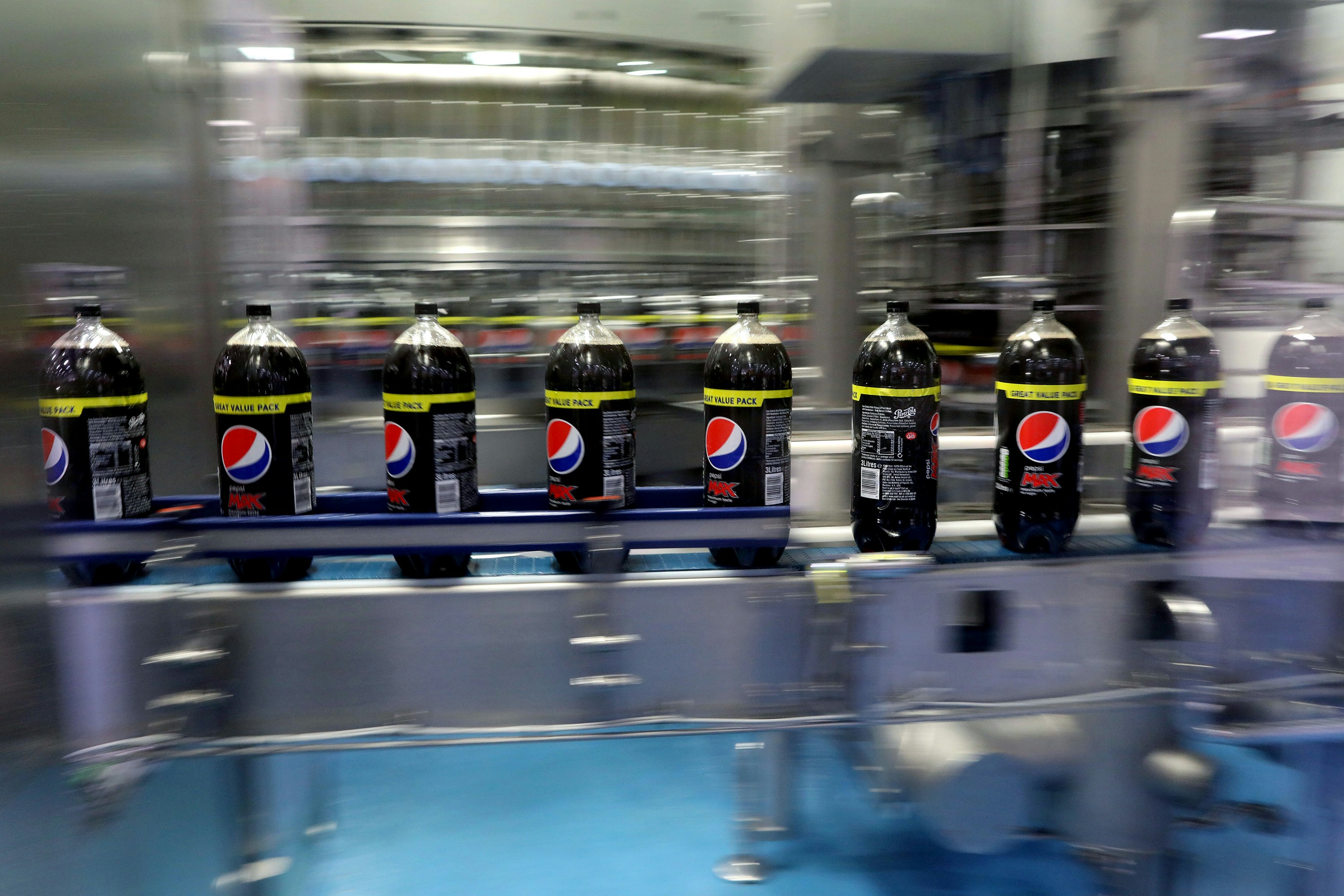
Bottles of Pepsi Max travel along the
production line at the Britvic PLC factory and warehouse in Leeds, U.K., on
Jan. 23, 2017.
Photo: Chris Ratcliffe/Bloomberg via
Getty Images
Big Plastic Fights Back
Even the executives at a recent
plastics industry conference admit how bad the crisis is — at least to one
another. All we hear is “you’ve got to get rid of plastics,” Garry Kohl, of
PepsiCo, said to his fellow members of the Plastics Industry Association at a
conference in April. Gathered in the gilded ballroom of a Dallas hotel, the
representatives of big plastics manufacturers, recyclers, raw materials
providers, extruders, brand owners, and others in the plastics business
grappled aloud about their role in the crisis. Especially difficult, said Kohl,
who directs packaging innovation of PepsiCo’s snacks and foods, was the widely
circulated picture of a dead plastic-filled albatross. “This is very emotional for our senior leaders,”
Kohl said, as the now iconic picture of the albatross — really just a few
feathers and a decaying beak arranged around an assortment of bottle caps,
lighter parts, and plastic bits — flashed above him. “They’re all talking about
the albatross.”
Patty Long, interim president and
chief executive officer of the Plastics Industry Association, the group that
convened the Texas meeting, also acknowledged the pain of being the public face
of an industry held responsible for the devastation of the natural world. Long
admitted that she squirmed her way through another social media phenomenon
that, along with the albatross, has changed the course of the war over
plastics: the video of the sea turtle with a plastic straw jammed in
its nostril. Long isn’t the only one. Since it was posted in 2015, the eight
excruciating minutes in which marine biologists yank at the plastic straw with
pliers while the creature squirms and bleeds, has been viewed 36 million times.
In this photo provided by the U.S.
Fish and Wildlife Service, a black footed albatross chick with plastics in its
stomach lies dead on Midway Atoll in the Northwestern Hawaiian Islands on Nov.
2, 2014.
Photo:
Dan Clark/USFWS via AP
All in all, Long admitted, it had
been a tough year, in which some 376 anti-plastics bills were introduced, and
the perception of the plastics industry has continued to “spiral down
exponentially.” The Plastics Industry Association is taking its cratering image
seriously, working to offset it with pro-plastics presentations for elementary and middle school students,
a plastics ambassadors program and, so young people can “feel good
about” working in the industry, Long said, a “future leaders in plastics” group.
But discomfort over the dead
albatross, the bloody turtle, and industry’s public image notwithstanding, the
companies that make billions from plastics have no intention of slowing down.
Instead, the industry is gearing up for the fight of its life, which may
explain why an expert in actual warfare gave the keynote at the plastics
conference.
The industry is gearing up for the
fight of its life, which may explain why an expert in actual warfare gave the
keynote at the plastics conference.
In 2000, U.S. Navy Cmdr. Kirk Lippold
guided his crew through a terrorist attack on the USS Cole, in which 17 sailors
were killed and 39 injured. Now a crisis management consultant, Lippold told
the audience at the Plastics Industry Association meeting a grueling story of
mass casualties, near-death experiences, and a shrapnel-filled vessel taking on
water. His tale, which ended with Lippold piloting his hobbled ship back into
the open seas with the national anthem blaring, suggested that with enough
fierce determination, the plastics executives too might be able to sail past
the threats facing them.
At stake for them is not just the
current plastics market now worth hundreds of billions of dollars annually, but
its likely expansion. Falling oil and gas prices mean that the cost of making
new plastic, already very low, will be even cheaper. The price drop has led to
more than 700 plastics industry projects now in the works, including expansions
of old plants and the construction of new ones by Chevron, Shell, Dow, Exxon,
Formosa Plastics, Nova Chemicals, and Bayport Polymers, among other companies,
according to a presentation from the regulatory affairs director of the BASF
Corporation at the plastics industry conference.
The growing output of new cheap
plastic further undermines the industry’s own argument that recycling can
resolve the waste crisis. It’s already impossible for most recycled plastic to
compete with “virgin” plastic in the marketplace. With the exception of bottles
made of PET (No. 1) and HDPE (No. 2), the rest of the waste is
essentially worthless. Around 30 percent of both types of plastic bottles
were sold for recycling in 2017, though some of those may have wound up being
landfilled or incinerated. The recent fossil fuel boom makes it even cheaper to
make new plastic and thus, even more difficult to sell the recycled product.
This, in turn, makes the plastics companies’ push for recycling that much more
implausible — and their battle to kill efforts to limit plastics production even
more desperate.
While only eight states have enacted
plastic restrictions, more than 330 local plastic bag ordinances have passed in
24 states.
Photo: Getty Images
Banning Plastic Bans
Matt Seaholm, the executive director
of the American Progressive Bag Alliance, seemed to relish his part in the
fight. While others at the plastics industry conference tended toward
hand-wringing and at least some acknowledgment of the problem of plastic waste,
Seaholm was unapologetic in his antagonism of environmental groups that have
been calling attention to it. In Texas, Seaholm, the former national director
of the Koch brothers-led Americans for Prosperity, positioned himself as the
enemy of environmentalists.
“They hate what we’re doing,” Seaholm
told his plastics industry colleagues at the conference with a mischievous grin.
“We wear this as a badge of honor.” The fact that environmental groups oppose
the APBA’s tactics, Seaholm added, is evidence that his lobbying group “must be
doing something right.”
The APBA began pushing back against
plastics restrictions around the country in 2011. Around 2015, the industry
group upped its game. Rather than just opposing individual bans, the APBA began
lobbying for state preemption laws. The approach, which another Koch brothers-affliated group, the American Legislative Exchange Council, has used
to fight local action on other issues, including pesticide restrictions and living wagelaws, prevents cities and towns from passing local
plastic bans. In the past eight years, the American Chemistry Council has
helped pass preemption bills based on ALEC’s model in 13 states. According to Seaholm, who joined
the group in 2016, 42 percent of Americans now live in states where they can’t
pass local bans on plastics.
Other plastics industry lobbying
groups, including ALEC’s American City County Exchange and the National
Federation of Independent Business, have also argued for preemption, or
“uniformity” as they call it, on the grounds that bans hurt businesses that use
plastic. While presenting bans as bad for both businesses and poor people, who
they claim will be disproportionately affected, the industry has also used
campaign donations to make its case. Over the past year, the Flexible Packaging Association, whose members include Dow, Exxon Mobil Chemical,
SABIC, Chevron Phillips Chemical, and LyondellBasell, more than doubled its
spending nationwide. The group significantly upped its contributions to
Tennessee lawmakers, for instance, in the year leading up to the passage of the
bag preemption bill there.
While the APBA is fighting hard to
push plastics preemption, the group’s national spending is unclear because as a
wholly owned entity of the Plastics Industry Association, there’s no federal
requirement to make its expenditures public. But state lobbying disclosures
show that it has spent millions fighting bag bans. This advocacy of
plastic bans puts Plastics Industry Associations members, including PepsiCo,
Walmart, and the Carlyle Group, in an uncomfortable situation. All these brands
have made public sustainability pledges that appear to be at odds with the
group’s fights against local laws limiting plastic.
Asked about the apparent dissonance
between its sustainability pledge and participation in the Plastics Industry
Association, Walmart provided an emailed statement saying that “Walmart’s
aspiration is to achieve zero plastic waste. We are taking actions across our
business to use less plastic, recycle more and support innovations to improve
plastic waste reduction systems.” The statement also said that Walmart has
“asked our suppliers to reduce unnecessary plastic packaging, increase
packaging recyclability and increase recycled content, and to help us educate
customers on reducing, reusing and recycling plastic.”
PepsiCo and the Carlyle Group did not
respond to requests for comment.
Seaholm appeared not to care about
the terrible optics of the industry’s fight against efforts to protect the
environment with plastic bans, which he derided as “primarily driven by
emotion.” “They’re doing it because it feels good,” Seaholm told the plastics
executives in Dallas. “They get to high-five each other.”
At left, Kathy Kent with her
daughter, Suzette Head, collecting garbage on the beach. At right is Suzette’s
handwritten speech, which she delivered in front of the Isle of Palms, South
Carolina, city council on May 26, 2015.
Photos: Courtesy of Kathy Kent
The Plastics Industry Vs. Two
Little Girls
In Isle of Palms, South Carolina, the
people who spearheaded the state’s first plastic bag ban in 2015 wouldn’t
disagree that their effort was driven by emotion. Suzette Head and Mila Kosmos,
who live in the small coastal town near Charleston, screeched with joy when
their local ordinance passed. “I felt happy that the bags would be gone,” Mila,
now 9, remembered recently.
The effort began with another
emotion, when the two girls were in kindergarten: sadness. Suzette was at her
local aquarium when a naturalist held up a jar with a gray swirl inside and
asked what the kids thought it was. Suzette thought it was a jellyfish and said
so. When she learned that it was, in fact, a plastic bag and that a turtle
could die if it made the same mistake and ate the bag, she became distraught.
“Suzette loves animals,” her mother,
Kathy Kent, explained. On their walk home from the aquarium after the demonstration,
the two began talking about how they could stop people from throwing away
plastic bags. “At first I said to her, Well, you just can’t change people,”
said Kent. “But then I listened to myself and thought, Oh my God, what am I
saying and quickly walked it back.” Without having any idea what exactly she
was promising, Kent told her daughter that the two of them would do something
to keep plastic bags from ending up in the ocean. Shortly afterward, they
teamed up with Mila and her mother and several other Isle of Palms residents
who were also upset about plastic. They’d walk the beach in the afternoons
picking up bags and brainstorming. Eventually, they hit on the idea of drafting
a petition to ban bags and walked door to door to get the support of several
local shop owners.
“It was a piece of cake asking
businesses to support us,” said Kent. “Everyone else knows that having a
litter-free, clean beach is good for everyone and every business.” A little
over a year after Suzette’s upsetting trip to the aquarium, the ordinance
passed the city council in its first vote. Yet almost four years later, South
Carolina is now considering legislation backed by the APBA that would not just ban
future bag bans, but also undo the ordinance in Isle of Palms and 17 other
local laws that have since restricted plastic in South Carolina.
The Crying Indian
If the image of giant multinational
corporations destroying little girls’ efforts to protect sea creatures is
less than flattering, the plastics industry can take comfort in the fact that
it has successfully defeated environmentalists’ attempts to hold it responsible
for plastic with similar tactics before. The trick has been to publicly
embrace its opponents’ concern for the environment while privately
fighting attempts at regulation.
The double-edged strategy dates back
to at least 1969, when an editorial in Modern Plastics magazine warned about
the impending waste crisis. The big plastics makers were already aware of the
problem. That year, DuPont, Chevron, Dow, and the Society for the Plastics
Industry were among the groups represented at a conference on packaging waste.
And when the first Earth Day was launched in 1970 in part to tackle that
crisis, the industry was ready.
That week, demonstrators held an
“ecology trek” in which they dumped their nonreturnable bottles at Coca-Cola’s
headquarters. The activists had a solution to the mounting waste crisis: bottle
bills that would put the onus for cleaning up the waste on manufacturers.
Coca-Cola, which had been tipped off about the protests by the National Soft
Drink Association, met the demonstrators with free soda and trash bins. The big
beverage and packaging companies fought the bottle bill and came up with a
clever dodge that’s still paying off today. Not only did they tar supporters of
the bottle bills as radicals, but they also launched a massive PR campaign that
seemed to incorporate some of the anger about the mounting garbage that had
fueled the Earth Day protests while shifting responsibility for the waste away
from the companies that created it and onto consumers.
In 1971, Keep America Beautiful, an
anti-litter organization formed by beverage and packaging companies, including
PepsiCo, Coca-Cola, and Phillip Morris, teamed up with the Ad Council to create
the now-infamous “Crying Indian” ad. Although the “Indian” who tears up when he sees a bag of litter thrown on
the ground was really an Italian-American actor with a feather stuck in his
hair, the ad’s sneakier deception was that its expression of concern about
pollution was brought to the airwaves by many of the same companies that
produced the pollution. Even as their ad was inducing guilt in viewers for
spreading trash, Keep America Beautiful’s members were fighting legislation
that could have done much to address the problem.
“What makes this all the more
insidious is that these TV spots and other ads were presented as public service
announcements — and thus appeared to be politically neutral — but, in fact,
served the industry agenda,” said historian Finis Dunaway, who lays out the
story of Keep America Beautiful’s PR efforts in “Seeing Green: The Use and Abuse of
Environmental Images.” “It
was propaganda that did not appear propagandistic. It also shielded corporate
polluters from blame by shifting responsibility onto individuals.”
“These TV spots and other ads were
presented as public service announcements — and thus appeared to be politically
neutral — but, in fact, served the industry agenda.”
Future Earth Days would continue to
emphasize consumers’ personal responsibility for recycling, including the
national commemoration of the 10th Earth Day in 1980, which was organized by
Michael McCabe, a former legislative assistant who would go on serve as Joe
Biden’s communications and special projects director before spearheading DuPont’s defense of a dangerous chemical used in many
plastics, PFOA. In 1990, the 20th anniversary celebration was marked
by a celebrity-studded TV special that emphasized the importance of
individuals’ actions, including tree-planting and recycling, in protecting the
environment.
To this day, Keep
America Beautiful —
which is still led by executives at beverage and plastics
companies, including Dr Pepper, Dow, and the American Chemistry Council —
continues to focus on litterbugs, prodding errant citizens to better dispose of their
plastic waste while many of its members fend off regulation of their production
of that waste. Several of the group’s corporate partners — including founding companies Coca-Cola
and PepsiCo and their trade group, the American Beverage Association — have opposed bottle bills that have been shown to help solve the plastic
waste problem.
Noah Ullman, chief marketing officer
for Keep America Beautiful, disputes the idea that the organization was founded
“as some kind of ruse. The intent was not there,” he said in a phone interview.
Instead, Ullman wrote in an email to The Intercept, “the first objective of
Keep America Beautiful was, and remains, encouraging people to ‘put it in the
bin.’ Preventing litter is the basis for everything else — it helps keep
communities beautiful (which has a long list of social and economic benefits)
and helps protect animals and our environment from solid waste ending up in
unintended places.” Ullman said that the organization does not take a position
on bottle bills, but noted that while bottle bills improve the collection rates
of refunded materials, the “unintended consequence is that [it] devalues the
rest of the waste stream for recycling (e.g. glass, cartons, milk jugs,
etc.) and those items become less likely to be recycled.”
The American Beverage Association,
which has opposed bottle bills in the past, provided The Intercept with a
statement, saying, “We are not opposed to any ideas that will get us to better
recycling rates in the future if they do not harm the comprehensive curbside
recycling systems that consumers prefer.”
In an email, a representative of
Coca-Cola wrote that the American Beverage Association represents the company’s
views on bottle bills. The email also said that “at Coca-Cola, our focus is on
helping to collect and reuse the equivalent of 100 percent of the bottles and
cans that we put into the marketplace. This includes ensuring that all of our
packaging is 100% recyclable and using at least 50% recycled content in our
packaging by 2030.”
With their focus on recycling
and nonprofit status, Keep America Beautiful and other anti-litter
organizations funded by the plastics and beverage industry, including the Recycling Partnership, offer companies both the opportunity to demonstrate
concern about plastic pollution and a tax write off. The Coca-Cola Foundation
gave $640,000 to the Recycling Partnership to improve recycling in 2017, for
instance. The organization “works with thousands of communities all across the
country to provide access to cart-based recycling and education to help
residents understand how to recycle materials more and better, including paper,
aluminum and steel cans, cardboard, cartons, glass and, yes, plastics,”
according to an emailed statement from the organization.
While working to improve recycling
and create end markets for recycled plastic, the Recycling Partnership also
presents a particularly rosy view of recycling. In May, the group sent out
an email that announced that “87% of People Think
Recycling is Important,” while failing to mention the reality of single-digit
recycling rates. The group’s other funding partners include ExxonMobil, Keurig, Dr. Pepper,
Dow, the International Bottled Water Association, the American Beverage
Association, and the American Chemistry Council.
“They’re trying to create the
perception that there’s a viable way to recycle most plastic waste into new
products, and that’s simply not true.”
In its statement, the Recycling
Partnership noted that only half of Americans who have access to convenient
recycling do everything they could. The statement also said that the group is
working to create and support end markets for recycled plastic.
But according to Jan Dell, an
engineer who worked as a corporate sustainability consultant before creating
The Last Beach Cleanup, an organization that confronts plastics pollution, the
Recycling Partnership and other nonprofits supported by the plastics industry
are using misleading information to ease concerns that otherwise might lead
consumers to stop buying plastic. “They’re trying to create the perception that
there’s a viable way to recycle most plastic waste into new products,” said
Dell, “and that’s simply not true.”
A plastic bag sits in a Manhattan
street on May 5, 2016.
Photo: Spencer Platt/Getty Images
The “Recyclable” Scam
Much of the plastic waste that is
amassing in the oceans, buried in landfills, and scattered throughout nature is
“recyclable,” which is to say that it could, in theory, be refashioned into new
products. Companies have latched on to the hopeful term to make their latest
plastic products more palatable. Starbucks, for instance, has lavished praise on itself for its
“recyclable lid” rolling out in six cities this summer, which the company predicted will eliminate a billion straws. But because the
lids are made from polypropylene (also known as No. 5 plastic), and there
is very little market for recycled polypropylene, that number has no basis in
reality. Only 5 percent of polypropylene was recycled in 2015 — and that was
before China decided to stop taking our waste. Since then, the percentage
recycled is likely much lower still, meaning that the vast majority of the 1
billion new “recyclable” Starbucks lids will end up where the old ones did — in
landfills, trash heaps, incinerators, and the oceans.
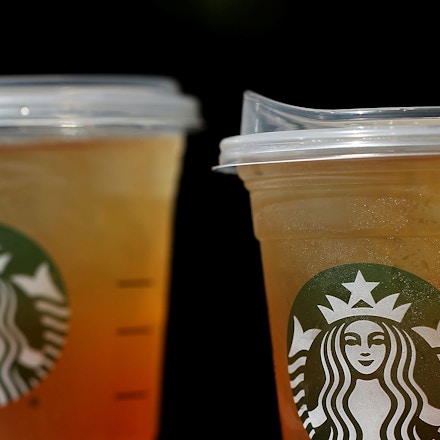
In January, Taco Bell also crowed over its own new plastic lids, as if
creating more plastic would somehow fix the plastics crisis. “Love the Earth?
Yep, us too,” the company’s website announced, “which is why we’ve recently
started to use recyclable cold cups and lids in all of our restaurants.”
Another company, Tempo Plastics,
explicitly advertises its plastic pouches as “guilt-free.” Although they’re made from high-density
polyethylene, or No. 2 plastic — only 5.5 percent of which is recycled in the U.S. — the company’s new “Harmony Pack” will feature reassuring green arrows and the
imprimatur of How2Recycle.
A project of the Sustainable
Packaging Coalition and recycling nonprofit called GreenBlue — whose board includes executives from Dow
Chemical, Mars, Target, Amazon, and the Delfort Group —
How2Recycle makes some plastic products seem far easier to recycle than they
are. The Federal Trade Commission’s Green Guide makes it clear that “to misrepresent, directly
or by implication, that a product or package is recyclable” is deceptive. In
order to make unqualified claims that a product is recyclable, recycling
facilities have to be available to at least 60 percent of the consumers to whom
it’s sold. But the How2Recycle symbol is now affixed to several products that
will be all but impossible for many consumers to recycle, including cups,
plates, and containers made from plastics Nos. 3 through 7, all of which now
have recycling rates close to zero.
Asked about the “guilt-free” pouch,
Kelly Cramer, director of How2Recycle at GreenBlue, wrote in an email that the
product was not “appropriately qualified” for the label and said that the
organization would “reach out to this company immediately to rectify.”
Regarding the pictures of plastic cups and plates that are not accepted by
recyclers in most parts of the country but whose packaging bore the How2Recycle
label, Cramer said that the label referred to the bags that contained the cups
and plates, which is recyclable if brought back to an in-store recycling program,
but acknowledged that the plates and cups inside them may not be
recyclable.
Although How2Recycle provides “not
recyclable” as well as “recyclable” labels, it is the member companies’ choice
whether to apply them, she said. “That member chose not to label the product,”
Cramer said. “This is an area where we’ve given the member a choice to label
the product or not. If we were too strict in our requirements, we wouldn’t have
as many members join the program.”
Cramer argued that another product,
cups made of polypropylene, or No. 5 plastic, may or may not qualify
as recyclable — a question that is now being litigated in a federal court in California. Cramer said
that GreenBlue is conducting research into the recycling rates of
polypropylene and defended the How2Recycle program as a way to minimize
waste that is a fact of modern life.
“We don’t want people to think that
recycling alleviates all their consumption guilt. But the truth of the matter
is that we all consume, and packaging protects products that have to be moved
to be sold,” she said. “In the future, it would be beautiful if we had robust
reuse or novel delivery systems to rethink the entire product packaging system.
But we’re not there yet.”
Although recycling does little to
alleviate the mounting plastics crisis, the promotion of it has proven
extremely useful to the industry when local bans on plastic bans have been
proposed. The American Chemistry Council recently rolled out local campaigns
for WRAP, or the Wrap Recycling Action Program, in several
places where plastic bans have been proposed.
The public-private partnership run by
the ACC, which encourages the recycling of plastic bags through 18,000 plastic
film collection sites around the country and promotes the idea that plastic
bags can be recycled, launched a new effort in Connecticut in 2017 that coincided with the
state’s consideration of a tax on plastic bags. When Chicago was
weighing a plastic bag tax in 2016, the ACC rolled out WRAP there too, announcing that locals can recycle plastic
bags “at nearly 400 local grocery and retail stores.” This year, in Florida,
the ACC made another local WRAP push just as a state-level bill to ban plastic straws was introduced.
The group teaches the public how to
recycle plastic film — any plastic less than 10 mil thick — a process that
turns out to be complicated enough to require its own educational organization.
Most municipal recycling programs don’t accept shopping bags and other flexible
plastic, which can snag machines. So WRAP directs consumers to bring it to local take-back
centers, which collect the film and send it on to recyclers. The plastic first
has to be washed and dried, according to WRAP, and even then only some of it
can be recycled. The program can recycle the clear wrap you might put
around food at home, as well as bags that contain most produce, groceries, and
bread, but not candy-bar wrappers, six-pack rings, and the plastic bags that
contain chips or frozen food.
But even as WRAP promotes the message
that plastic film can and should be recycled, and scolds people who don’t put plastic bags in recycle
bins, many of the used bags and other plastic waste it collects wind up being
burned or sent to landfills. According to the most recent report on plastic film recycling published in
July by the ACC, the amount collected in the U.S. and sold for recycling fell
from 1.3 billion to 1.0 billion pounds between 2016 and 2017 — and that was
before China’s restriction on plastic waste imports was fully implemented. The
ACC report admitted that some of the bags wound up where they would have if
they didn’t first make a brief stop in a bag-recycling bin. “Due to a lack of
buyers — for the quality and amount of material available — towards the end of
2017, landfilling material started to be more economical (despite diversion or
other environmental goals) than covering the handling and shipping costs of
getting material to market.”
It’s not clear what happened to the
300 million pounds of film that were sold for recycling in 2016 but not in
2017. Because the ACC doesn’t report the total amount of plastic film
collected, what proportion of the collected film that represents is also
obscure. Nor is it clear why the ACC has not yet reported the 2018 numbers. But
even within the 1 billion pounds of plastic film the ACC categorized as
“recycled,” much is likely either burned or landfilled. According to the
report, 378 million pounds of the film were exported, and the ACC said in an
emailed statement to The Intercept that it doesn’t know what happened to the
waste after that point.
Although the ACC doesn’t put an exact
number on the total amount of bags that were burned or landfilled, a
recent call to action from a group of plastics recyclers called
Recycle More Bags does. The document, which came out in May and called for
legislation that would require that new plastic bags contain recycled material,
noted that “600 million pounds of plastic bags collected for recycling in North
America in 2018 was landfilled or incinerated due to lack of end-markets.” A
later version of the document changed the figure to “hundreds of millions of
pounds.”
“Based on the two industry reports,
it looks like we may have incinerated and disposed of the same amount of
plastic film and bags that were reprocessed,” said Dell.
Workers sort recycling material at
the Waste Management Material Recovery Facility in Elkridge, Md., on June 28,
2018.
Photo: Saul Loeb/AFP/Getty Images
Recycling or Burning?
One of the latest solutions industry
is offering to the plastics crisis isn’t recycling exactly. While many
questions remain about what exactly the Hefty EnergyBag program is, it is
making it clear how expensive and difficult it is to find a use for plastic
waste.
In April, 49 years after protesters
kicked off the first Earth Day by dumping single-use waste at Coca-Cola’s
doorstep, Dow Chemical was a “forest green sponsor” of Omaha’s Earth Day event, despite the fact that it
is the largest plastics manufacturer in the world. With a $5,000 gift,
Dow’s Hefty EnergyBag program, a joint effort of Dow and Reynolds Consumer
Products, was one of the two biggest donors for the event. Held in Omaha’s lush
Elmwood Park, the day’s festivities were as green and wholesome as any
corporate sponsor could want. Native American folk music played as locals
strolled the grass from table to table learning about urban beekeeping, rain
barrels, microchickens, and tree planting. Children stroked a soft gray
rabbit. And dozens of environmentally concerned Nebraskans participated in an
outdoor yoga class, bending and stretching in the sun along with their
neighbors.
Dow and Hefty first rolled out the
program on Earth Day 2016 as a way for Omaha residents to dispose of plastic
forks and knives, chip bags, and other single-use plastics that the city hadn’t
been able to process. They just had to put the plastic trash into special
orange Hefty bags, put them out on the curb, and the city would pick up and
recycle the trash. “They were very definitely calling it recycling,” recalls
Richard Yoder, a local sustainability consultant. But Yoder and other
Omahanians soon learned that rather than being melted down into reusable
plastic, the contents of their bags were being burned in an incinerator in
Missouri that had a history of Clean Air Act violations.
Last year, after Yoder argued at
a local debate over the program that calling the Energybag
program recycling was misleading, Hefty stopped using that term. Yet, in
labored language, the company’s website still pitches the program as an environmental
good, or “a groundbreaking initiative that collects hard to recycle plastics.”
The Hefty EnergyBag program “complements existing recycling programs,”
according to Ashley Mendoza, a spokesperson for Dow. “Our long-term vision is
to keep more plastics out of landfills by collecting them for recycling or
recovery if they cannot be reused.”
After the Global Alliance for Incinerator Alternatives called out the Omaha program for creating more
pollution, the Dow and Hefty initiative also stopped sending the orange bags to
the incinerator. Since then, the plastic waste has been put to several
purposes, including being compressed into fence posts and railroad ties and going
“to a Canadian firm that made some sort of decking,” according to Dale Gubbels,
CEO of FirstStar Recycling, the Omaha company partnering with Dow and Hefty on
the project.
Because no one has learned how to
remove additives from plastic, products made from recycled waste can release
toxic chemicals as they degrade.
While Dow and Hefty promote the
program as a way to convert plastic into “valuable energy sources,” it isn’t
cheap, according to Gubbels. The expense has apparently disappointed some
initial proponents, who expected the program to pay for itself. “I have to try
to convince them if you want to recycle, you have to recognize that you’ve got
to pay for it,” he said. All in all, he added, the program, which was pitched
as an energy-efficient solution to plastic waste, has proven “far more
challenging than anyone had envisioned when this thing got started.” According
to an email from Mendoza, “The price of the Hefty® EnergyBag® orange bags cover
the cost of running the program.”
Scientists point out another hitch in
the energy bag plan: Because no one has learned how to remove additives from
plastic, products made from recycled waste, such as the railroad ties, fence
posts, and decks made from Omaha’s plastic, can release toxic chemicals as they
degrade. “Until we do a better job of eliminating the hazards in its first use,
you’re going to have problems managing the toxicity in every subsequent use,”
said Pete Myers, a biologist and the founder and chief scientist
of Environmental Health Sciences. “Some of the types of plastics that they’re
proposing to recycle contain chemicals connected to a 50-year decline in sperm
count, to type 2 diabetes, and to breast and prostate cancer. These are serious
problems and we don’t know enough about the exposures to make it safe for the
child sitting on that deck.”
When asked about this possibility, Gubbels
said he hadn’t considered it and didn’t have expertise in toxic chemicals. In
any case, Gubbels has been spreading Omaha’s plastic waste around. He sent one
recent load to Renewlogy, a plant in Salt Lake City, Utah, that heats the
plastic and extracts energy from it, and said he plans to send a load to a
similar plastic-to-energy facility in Texas called New Hope Energy.
The Myth of “Chemical Recycling”
Renewlogy and New Hope are two firms
offering what the plastics industry is putting forward as the newest solution
to plastic waste: so-called chemical recycling. According to the American Chemistry Council, expanding plastics recovery into this realm could
“result in billions of dollars of economic output.” Yet even the technology’s
biggest proponents acknowledge that no one yet knows how to efficiently and
economically convert plastic into its component parts and then back into fuel.
If all the non-recycled plastics in the U.S. were converted to oil, “we could
create enough fuel to power 9 million cars each year,” the Chevron Phillips sustainability
director, Rick Wagner, argued in a recent article in Plastics Recycling Update magazine. That
transformation would also allow Chevron, the second-largest plastic manufacturer in the world, to shrug off
its responsibility for the massive quantities of pollution now choking the
globe. But even Wagner admits that we’re still far from knowing how to
chemically recycle. It’s sort of like going to Mars, Wagner wrote. “We’re not quite there yet. Not
tomorrow, but someday. Hopefully soon.” Mendoza described pyrolysis, the method
used by the Renewlogy plant to which Hefty EnergyBag waste has already been
sent, as “a potential next step toward advanced recycling.”
The idea that plastic can be broken
down into its elements, which can then be turned into fuel, waxes, and
lubricants has been around for decades. But such waste-to-fuel plants have
never proven economically or environmentally viable. According to a 2017 report of the Global Alliance for Incinerator
Alternatives, most of the waste-to-fuel projects in the U.S., Canada, and
Europe, which used either pyrolysis or a related technology called
gasification, were closed or canceled before even getting off the ground. Among
the impediments cited in the report were the inability to meet energy
efficiency and pollution control goals. “In general, costs are higher and more
uncertain than project proponents foresee and revenues are lower and more
uncertain,” the report noted.
Waste-to-fuel plants have never
proven economically or environmentally viable.
The environmental and financial
viability of the latest energy-to-fuel plants is also unclear. When asked about
the efficiency of the facilities used by the Hefty EnergyBag program, Mendoza
wrote in an email that “material efficiency of a pyrolysis processing unit is
dependent on the technology used and the types of materials fed into the
facility.” Mendoza also wrote that “Dow has a vital interest and responsibility
in making plastic materials beneficial throughout their lifecycle. We are
working to improve the entire system where our products are used in order to
maximize resource efficiency and the benefits derived from using our products.”
Neither New Hope or Renewlogy, two of
the nine companies in the American Chemistry Council’s industry alliance for chemical recycling, would reveal what volume
of plastics their plants require to produce fuel. Renewlogy did not respond to
numerous emailed interview requests. But the company’s website says
that between Omaha’s waste and that collected through a similar Hefty EnergyBag
program in the city of Boise, a million pounds of plastic were “diverted” in
2018. A video on the site also describes Renewlogy’s process as cost-effective
and “proven clean.” The New Hope plant in Texas issued a press release
announcing that it will have a capacity to process 150 tons of plastic a day,
but the company declined to comment on that facility’s efficiency. “It’s a
brand-new industry and there are some things we can’t communicate about,” said
Lee Royal, who answered the phone there. “How we do business is probably not
something we’d like to share just now.”
In an emailed statement, the American
Chemistry Council defended the value of chemical recycling, noting that “these
technologies can produce a wide range of products beyond fuel, including higher
value chemicals and other feedstocks” and that such products “have much greater
value in the marketplace than in a landfill.”
The big open questions about the
efficiency, safety, and economic viability of the chemical recycling process —
and the admissions from its proponents that they haven’t figured out how to
make it work — haven’t stopped the chemical industry from passing laws
facilitating funding of the scheme. Texas recently became the sixth state to pass legislation (supported by Chevron Phillips
Chemical, Exxon Mobil, and the American Chemistry Council) that would pave the
way for new chemical recycling facilities.
Some of these laws have been designed
to ensure that the facilities will be subject to minimal regulation. By
categorizing them as manufacturing plants rather than solid waste disposal
sites, chemical recycling operations may be exempted from limits on nitrogen
oxide, sulfur dioxide, carbon monoxide, particulate matter, heavy metals, and
greenhouse gases that are imposed on solid waste sites.
Nevertheless, chemical recycling
facilities are already being promoted — and, in some cases, funded — as
sustainable fixes for the plastics problem. In Oregon, a waste management company is pushing to get its
plastic-burning plant classified as renewable energy. And in Ashley, Indiana, a new chemical recycling plant is being financed
with $185 million in green bonds from the state, funds that are earmarked
for environmentally beneficial projects. Brightmark Energy, the company behind
it, says its mission is to “rise up and meet the needs of our
planet.”
Some have objected to the use of
taxpayer money to back a process that has repeatedly failed financially when
it’s been tried in the past. “Every one of these pyrolysis facilities has
depended upon government largesse to even try to get off the ground,” said
Andrew Dobbs, campaign director at Texas Campaign for the Environment, a group
that opposed the Texas bill. “So-called chemical recycling doesn’t make
economic sense. It’s a highly expensive and energy-intensive process that’s
competing with burying things in a hole in the ground. On the other end,
they’re producing fuel, which is competing with natural gas when natural gas is
dirt cheap. The only way they’re going to make that work is for the costs to be
paid by someone else.”
According to the email from the
American Chemistry Council, chemical recycling “facilities are being developed
by venture capital and investment firms, which is a vote of confidence in the
financial promise of these technologies and business models.” The email also
noted that “Chemical recycling technologies are developing very quickly and —
like other technologies including wind and solar — will become more efficient
as they reach commercial scale.”
Whether it can meet its goal of
turning 288 tons of plastic per day into 778 barrels of diesel blend stocks,
418 barrels of naphtha blend stocks, and 360 barrels of industrial wax, this
latest take on plastic recycling will, like all chemical recycling plants, use
fossil fuels to convert fossil fuel products into additional fossil fuels. They
will also almost surely ease the way for the continued production of even more
plastic.
“This is all just a huge, incredibly
expensive distraction,” said Denise Patel, U.S. program director at the Global
Alliance for Incinerator Alternatives. While China’s decision to stop taking
U.S. plastic finally revealed the country’s plastics problem, the idea of
chemical recycling — fanciful as it may be — could undermine public urgency
about it, according to Patel. “China’s decision is an opportunity for cities to
examine waste and double down on reducing,” she said. “Instead, these projects
are exacerbating the problem by giving people the idea that there is a solution
and it’s OK to keep buying them.”
At the industry conference in Texas,
no one asked whether it was OK to keep producing more plastic. After the
pictures of injured sea creatures were gone and an accountant spoke to the
executives about how to best take advantage of Trump’s cuts to the top tax
brackets, attendees learned about the bright prospects for their industry.
Exports of the world’s most popular plastic, polyethylene, will not just
continue, but will likely experience “healthy growth” over the next several
years, as a presentation from the investment research firm IHS Markit
explained. Nor was there much question where all that new plastic will be sold.
An increasing share is expected to go to Asian countries other than China,
since the growing awareness of plastics pollution in Europe and North America
may slightly weaken markets there. The only real question about
the proliferation of a product we know to be heating the planet,
amassing all around and within us, and poisoning water and air around the
world, is what new techniques its producers will adopt to make it seem fine.
Correction: July 20, 2019, 4:05 p.m.
ET
An earlier version of this story misstated the amount in green bonds
financing a chemical recycling plant in Ashley, Indiana. It is $185 million,
not $85 million.
Correction: July 23, 2019
This story has been updated to clarify Kelly Cramer’s comments on the
recyclability of some products with packaging bearing the How2Recycle label.
WAIT! BEFORE YOU GO on about your day, ask yourself: How likely is it
that the story you just read would have been produced by a different news
outlet if The Intercept hadn’t done it? Consider what the world of media would
look like without The Intercept. Who would hold party elites accountable to the
values they proclaim to have? How many covert wars, miscarriages of justice,
and dystopian technologies would remain hidden if our reporters weren’t on the
beat? The kind of reporting we do is essential to democracy, but it is not
easy, cheap, or profitable. The Intercept is an independent nonprofit news
outlet. We don’t have ads, so we depend on our members — 24,000 and counting —
to help us hold the powerful to account. Joining is simple and doesn’t need to
cost a lot: You can become a sustaining member for as little as $3 or $5 a
month. That’s all it takes to support the journalism you rely on.
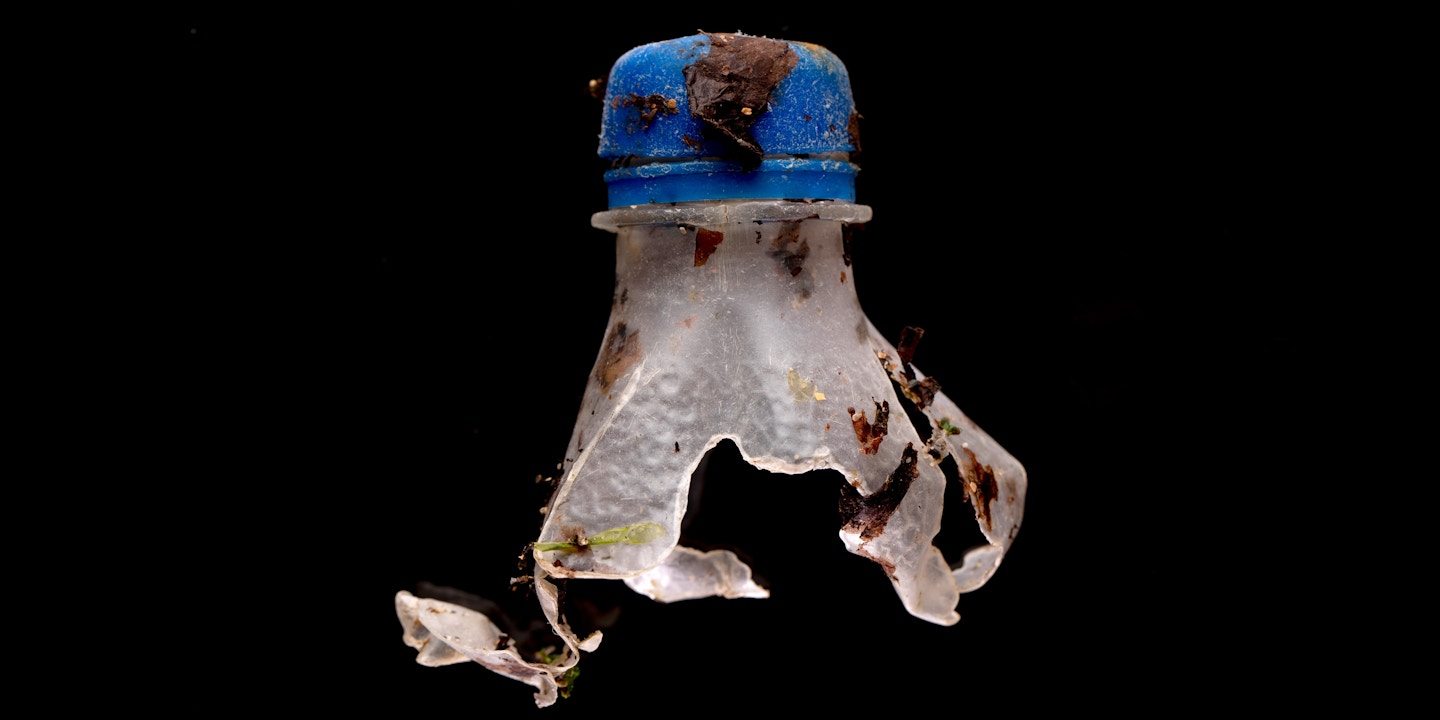



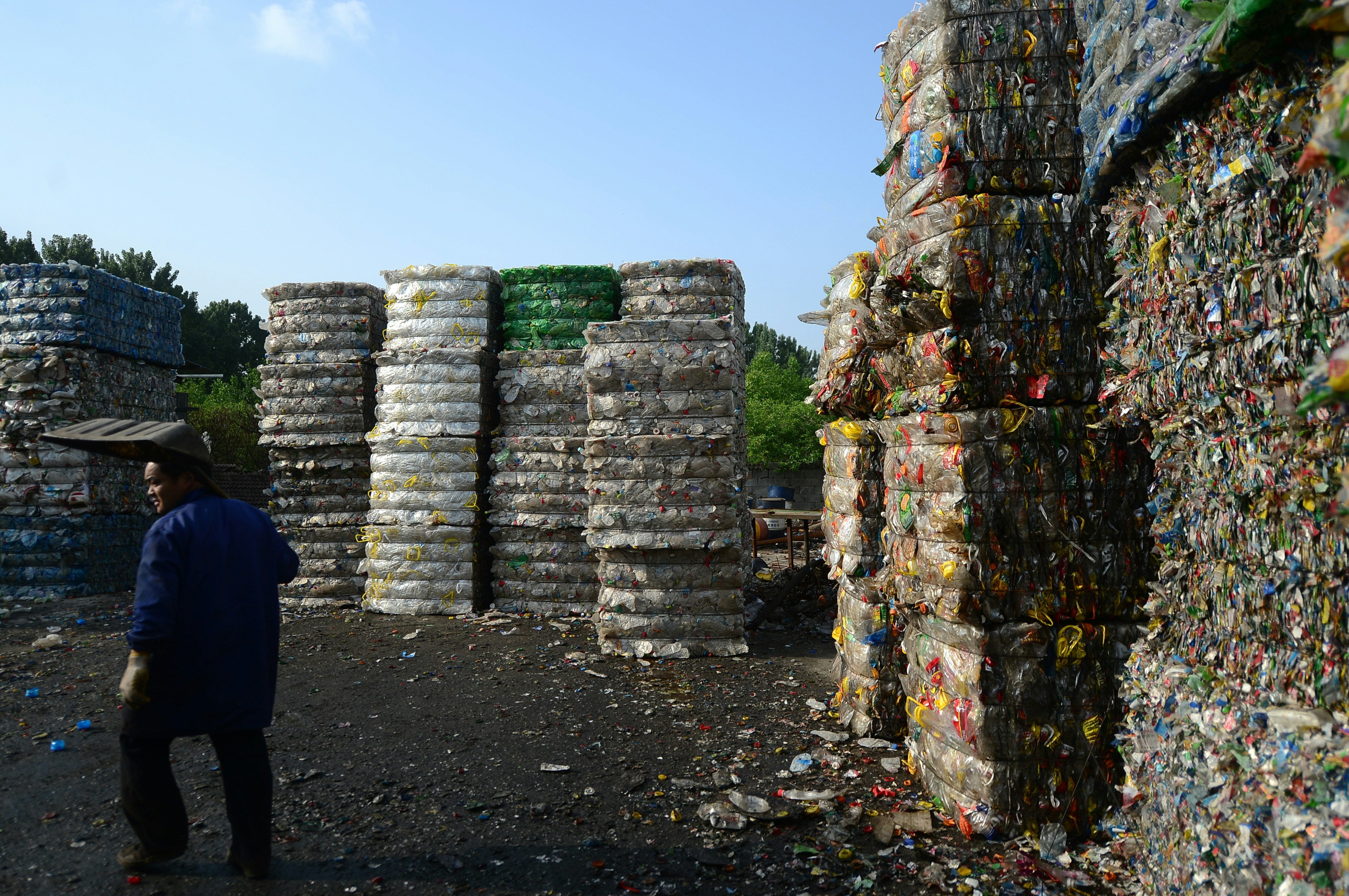
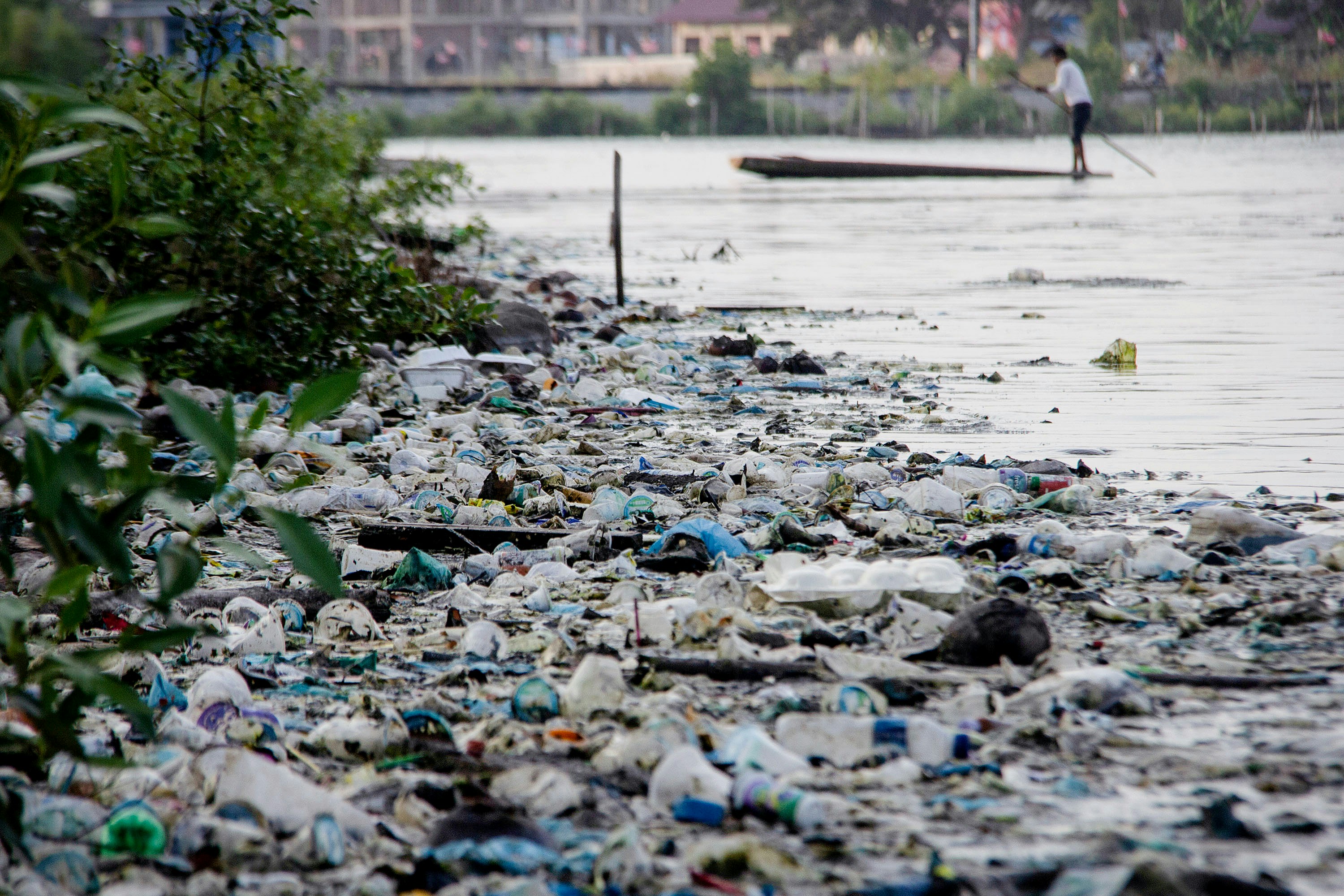


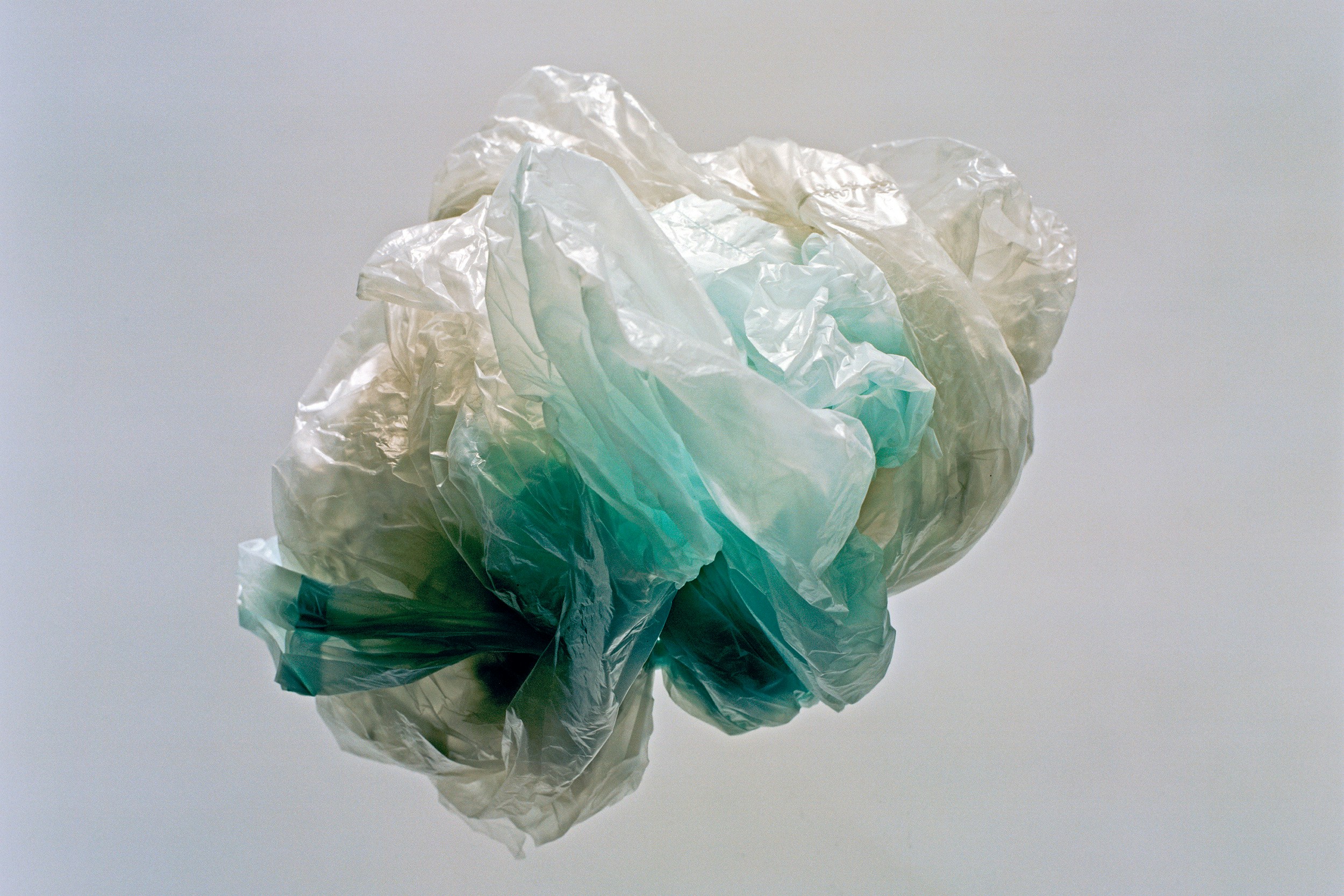
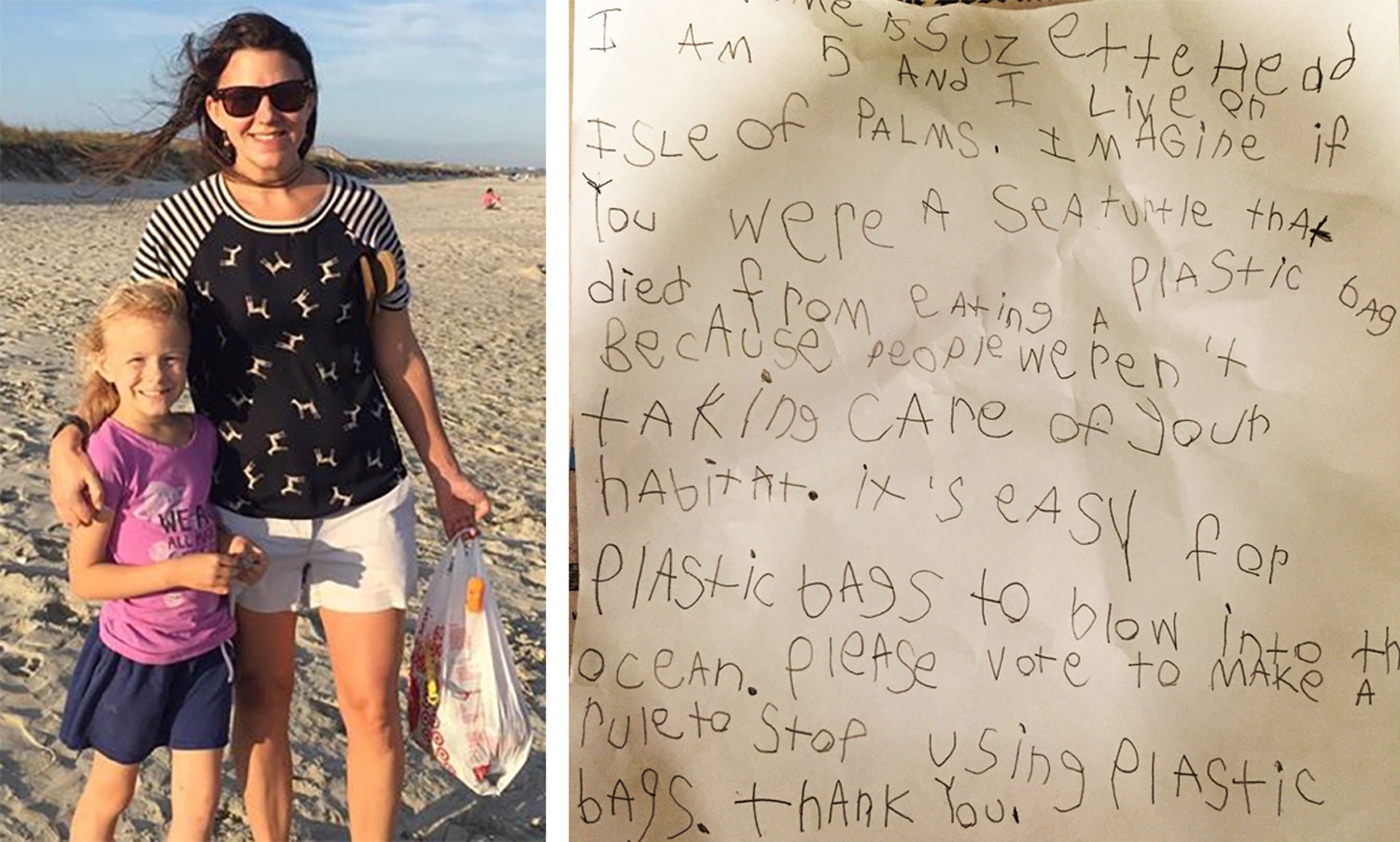
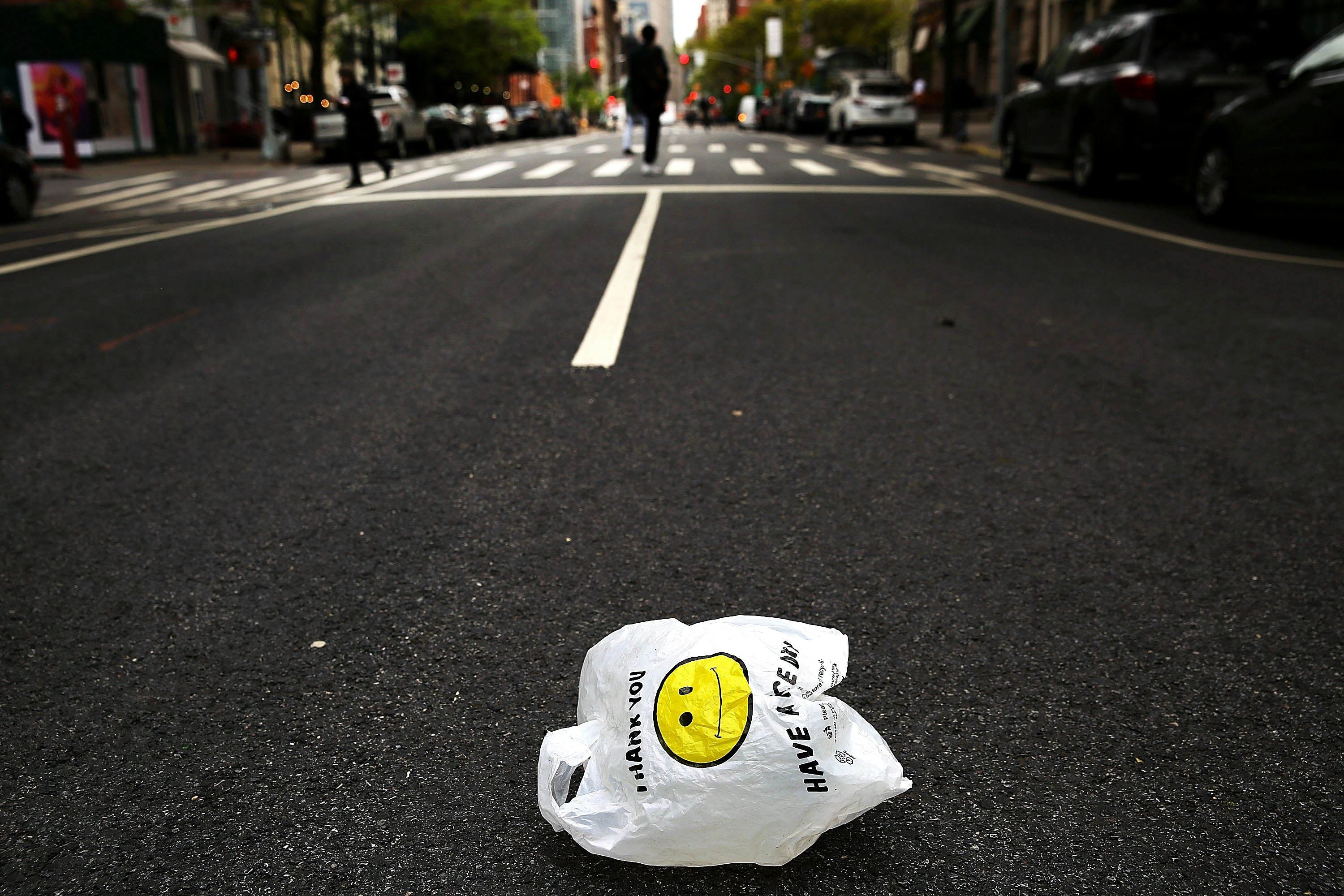

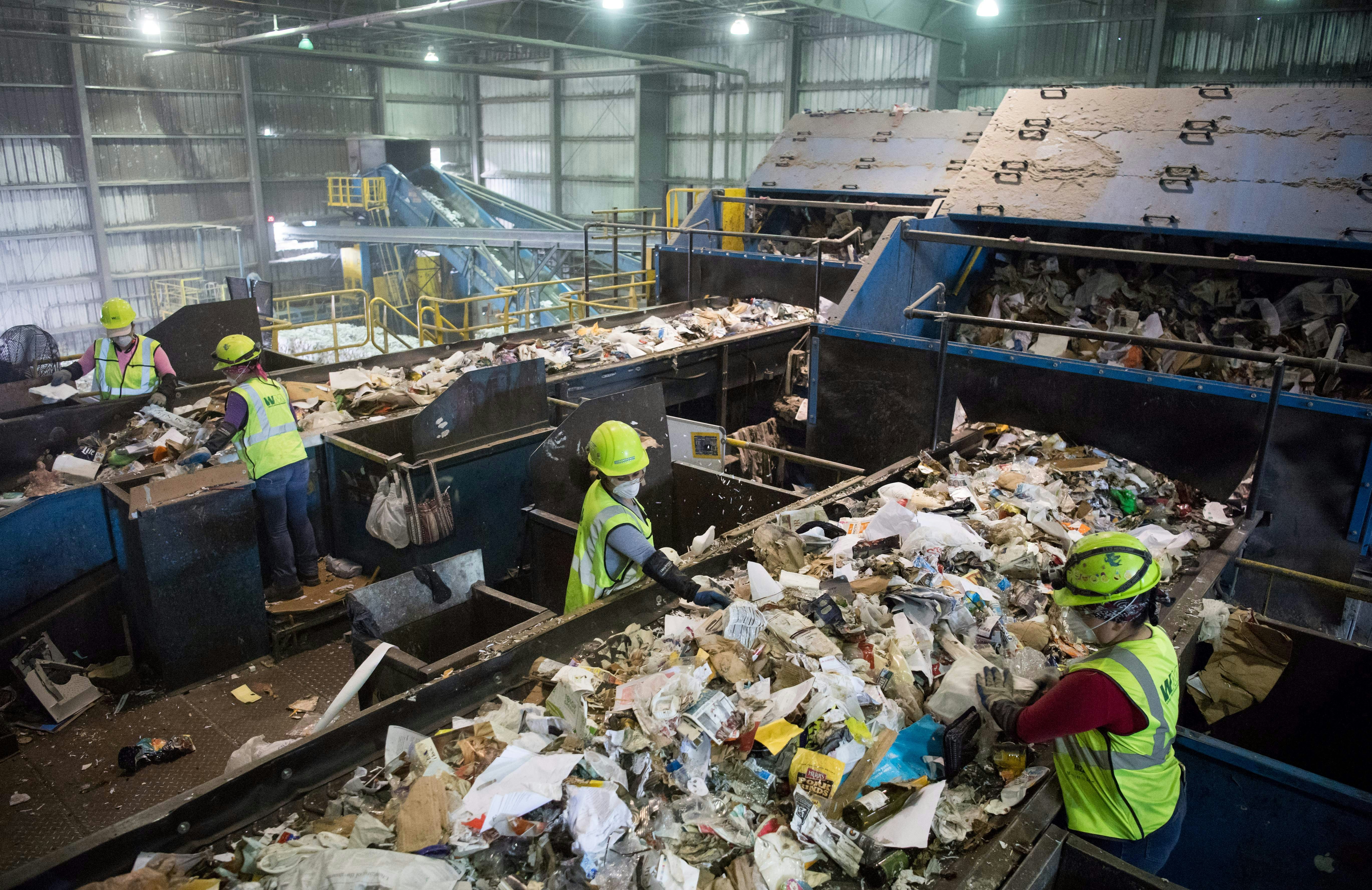




/https://www.niagarafallsreview.ca/content/dam/thestar/news/canada/2021/09/25/huawei-executive-meng-wanzhou-receives-warm-welcome-upon-return-to-china/_1_meng_wanzhou_2.jpg)













No comments:
Post a Comment
Note: Only a member of this blog may post a comment.